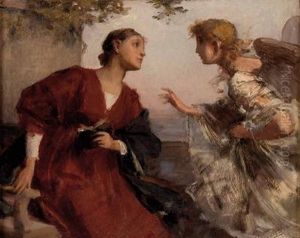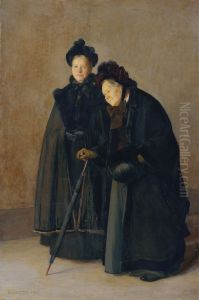Rudolf Bacher Paintings
Rudolf Bacher was an Austrian artist known for his role in the Vienna Secession movement, which sought to break away from the traditional academic art of the time. Born on January 25, 1862, in Klagenfurt, Austria, Bacher grew up during a period of significant change and modernization in the Austro-Hungarian Empire. He pursued his passion for art by studying at the Academy of Fine Arts Vienna, where he honed his skills and became influenced by the prevailing artistic trends of the late 19th century.
Bacher's work was characterized by an elegant blend of classical themes and modernist aesthetics. He was particularly drawn to the symbolism and stylistic experimentation that was becoming popular among avant-garde artists of the era. While he was not as widely known as some of his contemporaries like Gustav Klimt or Egon Schiele, Bacher contributed to the Vienna Secession movement by participating in their exhibitions and embracing the group's ethos of artistic freedom and innovation.
Throughout his career, Bacher received various commissions for portraits, landscapes, and historical paintings. However, he also explored other mediums such as graphic design and illustration, reflecting the Vienna Secession's multidisciplinary approach to the arts. Bacher's artistic output declined in his later years, but he remained a respected figure among his peers until his death on December 30, 1945, in Vienna.
His legacy, while not as prominent as that of some of his peers, is preserved in the collections of Austrian museums and in the history of the Vienna Secession movement. Bacher's contributions to the development of modern art in Austria continue to be recognized by art historians and enthusiasts who study the period.

